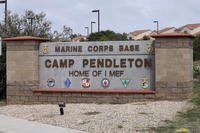Veterans living at a long-term care facility in a Chicago-area VA hospital are pleading for congressional intervention over being forced to live the past 10 months with black mold growing in their housing complex.
Veterans Affairs documents indicate officials at Edward Hines, Jr. VA Hospital knew about the black mold infestation in August 2015 but conducted no testing until mid-April 2016 and have yet to clean up the problem – though they are promising to act soon. The mold is contained in two rooms of the Residential Care Facility (RCF), a separate building housing 30 residents for indefinite stays.
"I was going by the hallway and the door was open. The back wall was all moldy black," 81-year-old resident Raymond Shibek told FoxNews.com. "I went and told the director of nursing. She said, ‘How did you see that?' I said, ‘The door was open.' She said, ‘You weren't supposed to see that.'"
Shibek said the mold covered an entire wall measuring roughly 10 feet-by-10 feet.
Resident Dan James, 58, said the staff "sat on this for months until we started getting aggressive about it," and "only taped off the rooms a month and a half ago."
Veterans say no one knows how long the mold has contaminated the building, but they claim a large number of patients have fallen ill, even died, over the past few years. It is unknown if the mold was in any way related to the illnesses.
An April 22-dated letter sent to Sen. Mark Kirk, R-Ill., and signed by 18 residents in the unit asked for congressional intervention.
"Granted, these poor souls (veterans-patients who reside in the RCF unit) are a group of … patients who need around the clock care, but still there seems to be a high number of both staff and patient illnesses, and a very high rate of death for the RCF unit veterans," the letter said.
Kirk, chairman of the Senate Appropriations VA subcommittee, fired off a letter earlier this week to a VA supervisor seeking answers on the mold problem. "The saddest part about this work is that there seems to be no bottom – each time we discover a problem, there always seems to be a cover-up, instances of willful incompetence, and/or another problem right around the corner," he wrote.
Kirk previously has criticized Hines management over an infestation of cockroaches in the hospital kitchen, prompting him to author a bill requiring mandatory outside health inspections.
The VA says it is moving to address the mold situation.
An internal email dated March 4 from Rita Young, Hines' chief of Safety and Emergency Management Services, was sent to union stewards updating them. Young said the drywall in two rooms contained "black mold" caused by a pipe leak that has been repaired.
It took until April 5 for VA officials to post a bid notice asking for "hazardous material abatement." The project will be awarded next month and is expected to be completed in July, VA spokeswoman Jane Moen said.
The VA did not comment on the delay in cleaning up the mold other than to say, "Hines takes any allegations regarding patient safety and concerns seriously. Our veterans, staff and visitors are our #1 priority."
The VA has not provided any memos or proof that mold testing was conducted prior to the April tests.
Mold can be found in buildings that have damp conditions, creating spores that can become airborne and pose a health risk to people with immune deficiencies or prone to respiratory problems, according to the U.S. Department of Labor.
"For some people, having excessive mold is not a good thing to have. Certainly people are allergic, but it's a small percentage," said Dr. Ronald Gots of the International Center for Toxicology.
Gots, though, said the notion that black mold causes severe illness for the general population is overblown.
The mold was first discovered by a maintenance worker who saw a black substance on the wall behind the lockers, said resident Charles Scott, 26.
It was then that the residents began an odyssey to have the rooms sealed off and the mold removed not only from the locker room, but a nearby storage and maintenance room, Scott said.
"We are really worried about this, you have a lot of people with respiratory illnesses," Scott said. "Another VA hospital had Legionnaire's Disease and a bunch of people died. How do we know that won't happen to us?"
When the veterans noticed that nothing was being done to alleviate the mold problem, they insisted on meeting with staff, they said. A meeting was held March 17 with 10 residents and 14 upper-level management VA officials including two doctors.
Minutes from that meeting said, "Clinical/medical risks of mold discussed in meeting. Potential hazards and risks include smell, allergic reaction and/or asthma attacks within 6.5 hours of inhaling."
The minutes also said:
"When the mold was discovered, rooms C106 and C107 were shut down, residents' items were removed from that room, and water source contributing to mold room was resolved. However, this issue was not followed up with the right people and is being handled now."
Red "Do Not Enter" signs were taped to the doors, along with a VA memo describing the pipe leak and saying, "There were missed opportunities and lessons learned from this situation. Communication and notification to all parties until the issue is resolved is key."
Vets Pleading for Cleanup of Black Mold Festering in VA Hospital
© Copyright 2024 Fox News. All rights reserved. This material may not be published, broadcast, rewritten or redistributed.



























